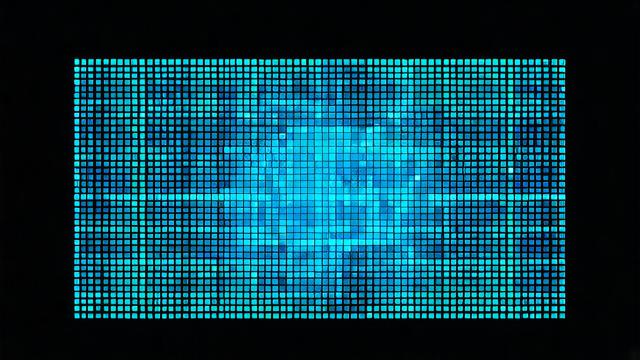byte数组与数据库交互
在现代软件开发中,处理二进制数据并将其存储到数据库是一个常见的需求,本文将深入探讨如何将byte数组存储到不同类型的数据库中,包括关系型数据库和NoSQL数据库,并介绍相关的实现方法和最佳实践。

1. 关系型数据库中的存储方法
关系型数据库如MySQL、PostgreSQL和SQL Server提供了多种方式来存储二进制数据,其中最常用的是BLOB类型(Binary Large Object)。
MySQL中的BLOB存储
在MySQL中,BLOB类型有四种:TINYBLOB、BLOB、MEDIUMBLOB和LONGBLOB,分别用于存储不同大小的二进制数据,以下是使用Java将byte数组存储到MySQL数据库的示例代码:
import java.sql.*;
public class BlobExample {
public static void main(String[] args) {
String url = "jdbc:mysql://localhost:3306/your_database";
String user = "your_username";
String password = "your_password";
byte[] byteArray = {1, 2, 3, 4, 5}; // 示例byte数组
try (Connection connection = DriverManager.getConnection(url, user, password)) {
// 创建表
String createTableSQL = "CREATE TABLE IF NOT EXISTS blob_table (id INT AUTO_INCREMENT PRIMARY KEY, data BLOB)";
try (Statement stmt = connection.createStatement()) {
stmt.execute(createTableSQL);
}
// 插入数据
String insertSQL = "INSERT INTO blob_table (data) VALUES (?)";
try (PreparedStatement pstmt = connection.prepareStatement(insertSQL)) {
pstmt.setBytes(1, byteArray);
pstmt.executeUpdate();
}
// 检索数据
String selectSQL = "SELECT data FROM blob_table WHERE id = 1";
try (Statement stmt = connection.createStatement();
ResultSet rs = stmt.executeQuery(selectSQL)) {
if (rs.next()) {
byte[] retrievedBytes = rs.getBytes("data");
// 处理检索到的byte数组
}
}
} catch (SQLException e) {
e.printStackTrace();
}
}
}PostgreSQL中的BYTEA存储
在PostgreSQL中,BYTEA类型用于存储任意大小的二进制数据,以下是使用Java将byte数组存储到PostgreSQL数据库的示例代码:
import java.sql.*;
public class ByteaExample {
public static void main(String[] args) {
String url = "jdbc:postgresql://localhost:5432/your_database";
String user = "your_username";
String password = "your_password";
byte[] byteArray = {1, 2, 3, 4, 5}; // 示例byte数组
try (Connection connection = DriverManager.getConnection(url, user, password)) {
// 创建表
String createTableSQL = "CREATE TABLE IF NOT EXISTS bytea_table (id SERIAL PRIMARY KEY, data BYTEA)";
try (Statement stmt = connection.createStatement()) {
stmt.execute(createTableSQL);
}
// 插入数据
String insertSQL = "INSERT INTO bytea_table (data) VALUES (?)";
try (PreparedStatement pstmt = connection.prepareStatement(insertSQL)) {
pstmt.setBytes(1, byteArray);
pstmt.executeUpdate();
}
// 检索数据
String selectSQL = "SELECT data FROM bytea_table WHERE id = 1";
try (Statement stmt = connection.createStatement();
ResultSet rs = stmt.executeQuery(selectSQL)) {
if (rs.next()) {
byte[] retrievedBytes = rs.getBytes("data");
// 处理检索到的byte数组
}
}
} catch (SQLException e) {
e.printStackTrace();
}
}
}SQL Server中的VARBINARY存储

在SQL Server中,VARBINARY类型用于存储定长的二进制数据,而VARBINARY(MAX)用于存储可变长度的二进制数据,以下是使用Java将byte数组存储到SQL Server数据库的示例代码:
import java.sql.*;
public class VarbinaryExample {
public static void main(String[] args) {
String url = "jdbc:sqlserver://localhost:1433;databaseName=your_database";
String user = "your_username";
String password = "your_password";
byte[] byteArray = {1, 2, 3, 4, 5}; // 示例byte数组
try (Connection connection = DriverManager.getConnection(url, user, password)) {
// 创建表
String createTableSQL = "CREATE TABLE IF NOT EXISTS varbinary_table (id INT IDENTITY(1,1) PRIMARY KEY, data VARBINARY(MAX))";
try (Statement stmt = connection.createStatement()) {
stmt.execute(createTableSQL);
}
// 插入数据
String insertSQL = "INSERT INTO varbinary_table (data) VALUES (?)";
try (PreparedStatement pstmt = connection.prepareStatement(insertSQL)) {
pstmt.setBytes(1, byteArray);
pstmt.executeUpdate();
}
// 检索数据
String selectSQL = "SELECT data FROM varbinary_table WHERE id = 1";
try (Statement stmt = connection.createStatement();
ResultSet rs = stmt.executeQuery(selectSQL)) {
if (rs.next()) {
byte[] retrievedBytes = rs.getBytes("data");
// 处理检索到的byte数组
}
}
} catch (SQLException e) {
e.printStackTrace();
}
}
}2. NoSQL数据库中的存储方法
NoSQL数据库如MongoDB和Redis也提供了灵活的方式来存储二进制数据,以下是一些常用的方法和示例代码。
MongoDB中的GridFS存储
MongoDB使用GridFS来处理大文件和二进制数据的存储,以下是使用Java将byte数组存储到MongoDB的示例代码:
import com.mongodb.client.*;
import org.bson.types.ObjectId;
import java.util.Base64;
public class MongoDBExample {
public static void main(String[] args) {
String uri = "mongodb://localhost:27017";
try (MongoClient mongoClient = MongoClients.create(uri)) {
MongoDatabase database = mongoClient.getDatabase("your_database");
MongoCollection<Document> collection = database.getCollection("your_collection");
byte[] byteArray = {1, 2, 3, 4, 5}; // 示例byte数组
String fileName = "exampleFile";
GridFSBuckets gridFSBuckets = GridFSBuckets.create(database);
GridFSBucket gridFSBucket = new GridFSBucketAdapter(gridFSBuckets);
GridFSUploadOptions options = new GridFSUploadOptions().chunkSizeBytes(1024).metadata(new Document("fileName", fileName));
ObjectId fileId = gridFSBucket.uploadFromStream(fileName, new ByteArrayInputStream(byteArray), options);
System.out.println("Stored file with id: " + fileId);
} catch (Exception e) {
e.printStackTrace();
}
}
}Redis中的存储方法
Redis支持直接存储二进制数据,但通常需要对数据进行编码或序列化,以下是使用Java将byte数组存储到Redis的示例代码:

import redis.clients.jedis.Jedis;
import java.util.Base64;
public class RedisExample {
public static void main(String[] args) {
Jedis jedis = new Jedis("localhost");
byte[] byteArray = {1, 2, 3, 4, 5}; // 示例byte数组
String key = "exampleKey";
String base64Value = Base64.getEncoder().encodeToString(byteArray);
jedis.set(key.getBytes(), base64Value.getBytes());
byte[] retrievedBytes = jedis.get(key.getBytes());
byte[] decodedBytes = Base64.getDecoder().decode(new String(retrievedBytes));
System.out.println("Retrieved byte array: " + java.util.Arrays.toString(decodedBytes));
}
}3. 选择合适的方法与最佳实践
在选择存储方法时,需要考虑以下几个因素:数据的大小、访问频率、安全性和性能要求,以下是一些最佳实践建议:对于较小的二进制数据,可以使用BLOB、BYTEA或VARBINARY等类型直接存储在关系型数据库中,对于较大的数据,建议使用专门的大数据存储解决方案如MongoDB的GridFS或云存储服务,始终考虑数据的完整性和安全性,使用加密和校验机制保护敏感数据,根据业务需求选择合适的数据库类型和存储方案,以优化性能和成本,通过以上方法和最佳实践,可以有效地将byte数组存储到各种类型的数据库中,并根据实际需求选择最合适的存储方案。
以上就是关于“byte数组通配符数据库”的问题,朋友们可以点击主页了解更多内容,希望可以够帮助大家!